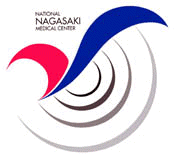Medical Departments
Inpatient Treatment Wards diagram

Medical Departments
Internal Medicine; General Internal Medicine, Cardiology, Endocrinology,
Gastroenterology, Hematology, Hepatology, Nephrology, Respiratory disease,
Rheumatic disease, Psychiatry, Psychiatric Internal Medicine, Pediatrics,
Surgery; Brain and Nerve Surgery, Breast Surgery, Cardiac Surgery, Digestive Surgery, Endocrine Surgery, Pediatric Surgery, Respiratory Surgery, Orthopedic Surgery, Plastic Surgery,
Anesthesiology, Dermatology, Emergency, Obstetrics and Gynecology,
Ophthalmology, Urology, Radiology, Rehabilitation,
(Total Family Support Departments : 31)
Hospital Faculties
Advanced General Medical Facility
- Emergency Medical Center in Nagasaki
- Nagasaki Regional Core Hospital of Cancer
- NHO Core hospital for Liver Diseases
- Nagasaki Regional Core Hospital for Liver Diseases
- Foundational Medical Center (neonatal medicine)
- Medical Center for Disasters
- Medical Center for AIDS
- Regional Medical Support Hospital
- Core Parent Hospital for Remote Area Hospitals
- Registered kidney transplant facility
Facts & Figures
- Number of departments stated
- Number of beds available
- Outpatients
- Rate of bed usage
- Number of emergency patient
- Number of surgeries
- Number of staff
- Property lot size
- Building area

The National Nagasaki Medical Center symbol is in the image of a waterfowl flying out from the land of Nagasaki (N) with two wings; (pink) heartwarming care with a foothold in the local area and remote islands, (blue) a medical base with an international outlook.
The waves are the four pillars of “advanced specialized care” “clinical research” “education and training” “international medical cooperation”, making a figure expressing transmission of information to the world.
The figure has been designed in a beautiful, clear, and sublime way to depict a great history and the base of the medical network with its eye turned toward the world.